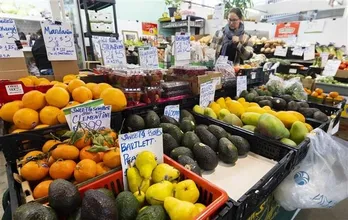
Harvested mud crabs. (Photo: VNA/VNS)
In the province, farmers harvest three mud crab crops a year, including one for Tet, as it takes about four months from breeding until harvest.
Farmers in the province, which is one of the delta’s largest mud crab producers, breed mud crabs mostly in the coastal areas of Cau Ngang, Duyen Hai and Chau Thanh districts and Duyen Hai town.
Nguyen Van Hue, who breeds mud crabs in Chau Thanh’s Long Hoa commune, said most mud crab farmers earned high profits last year because of high prices.
Mud crabs are purchased by traders at prices between 150,000-320,000 VND (6.5-14 USD) a kilo depending on their gender and size.
The province’s mud crabs are sold locally and other localities, including HCM City, and are exported.
With stable selling prices, breeding mud crabs provides farmers sustainable incomes compared to black tiger shrimp and white-legged shrimp under semi-intensive farming models, according to authorities.
Huynh Quoc Vu, Chairman of Long Hoa commune's People’s Committee, said many farmers in the commune had switched from breeding three shrimp crops a year to one shrimp crop and two mud crabs a year, or switched completely to breeding two to three mud crab crops a year.
The switch had offered high and sustainable incomes for farmers, he said.
Many farmers also stagger the breeding of mud crabs so they can have harvest year round to avoid an over-supply during the main harvest seasons.
Each year farmers in the province also calculate the time when they begin a new mud crab crop for Tết so they can harvest before the holiday to fetch high prices.
The province’s Department of Agriculture and Rural Development has encouraged farmers in coastal areas to breed mud crabs, including rotation of mud crab and shrimp in the same ponds, to reduce the risk of losses.
Farmers have also been encouraged to breed mud crabs under advanced extensive farming models in mangrove forests, a method that adapts to climate change and is sustainable.
The province has more than 9,000ha of mangrove forests in coastal areas. Of the figure, the province has allocated 5,460ha for individual households and organisations to protect and exploit, including breeding aquatic species in mangrove forests.
Mud crabs are easy to breed, are resistant to disease, and do not require high breeding costs as they eat mostly trash fish.
With a coastline of 65 kilometres, the province has potential to develop aquaculture, including mud crab cultivation.
The province has 13,000ha of mud crab with an annual output of more than 1,400 tonnes. Of the 13,000ha, 35 per cent are intensive farming with a yield of 0.8 – 1.2 tonnes per hectare a year./.
VNA
 Retailer brings Vietnamese products closer to consumers in Canada
Retailer brings Vietnamese products closer to consumers in Canada



